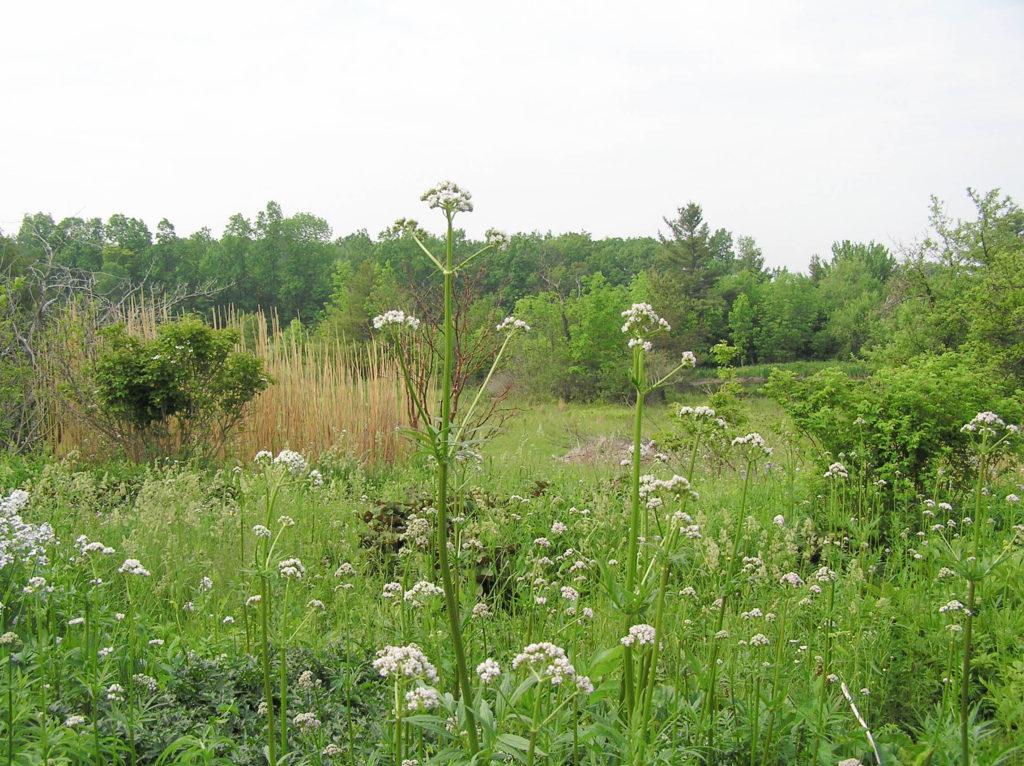
Personal Responsibility Warning
I like to write about herbal medicine and healthcare and I hope you find the information useful. However, it is important for people to take personal responsibility for what they use, ingest and/or give to others. I try to present clear information, but there is always a chance that the information is inaccurate. This could be due to the limitations of my personal knowledge and experience or for other reasons. Health is individual and complex and there is the possibility that this information could be wrong for you. I do not write this due to any agency admonishments, but from the real concern I have that people can do harm from what I write. I want people to use herbal medicine and have devoted a large portion of my life to understanding it. Unfortunately, information on plant medicines is fragmented and incomplete and so all I can offer is what I have seen, heard or read from reasonably trusted sources.
What I am trying to say is, before you put anything in your mouth or give to someone else, do your research. Ask questions and keep skeptical. Thank you for reading this
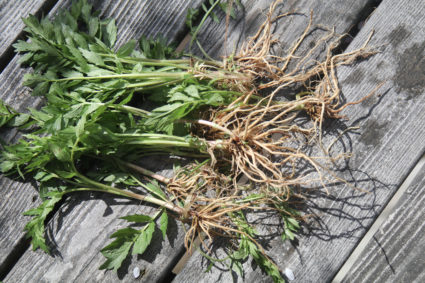
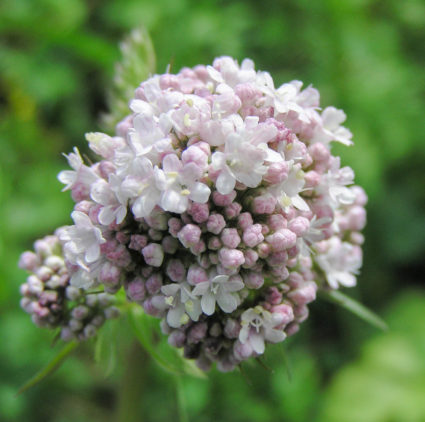
Introduction
Valerian root is one of the most popular herbal medicines. It is one of the few herbal remedies that many of my patients have tried even if they rarely use herbal medicine. I remember it being sold even before the herb boom began in the 1990’s.
The plant naturally has a much earlier history of use and is recorded in some of the earliest European writings. The Indigenous Peoples of North America had diverse uses for the various species native to this continent. It is also a plant I have used extensively since I began my herbal studies in the 1980’s.

Interesting Notes That Do Not Fit Elsewhere
- There are numerous other plants that have the common name of Valerian such as Greek valerian (Polemonium reptans. Polemoniaceae). This plant likely has the name Valerian due to the similarity of its leaf shape (which is also why it is called Jacob’s ladder).
- Story time. I used to work at the Natural Doctor’s International (NDI) clinic in Nicaragua. I saw that Valerian was often used and at one point I noticed on a label that the plant they call Valerian in was the roots of Vetiver grass (Chrysopogon zizanioides. Poaceae). So while two entirely different plants, they are used similarly as a sedative, pain reliever and sleep aid. An interesting note from Dr. Tania Neubauer who I worked with at NDI is that people have a similar paradoxical effect from this plant (Vetiver) as they do with Valerian. I wonder if they share some similar chemistry. And one more Nicaragua story. The first time I visited I was working with Dr. Tabatha Parker (the founder of NDI) at the local clinic and the first patient we saw was a very elderly man named Valeriano, the only time I have heard this name. He was difficult to understand but he said he was 105 years old and still worked in the fields and took care of his blind wife. He was an example of long-lived strength and fortitude.
- It is true that some cats love Valerian root as this video of my cat Pedro can attest to.
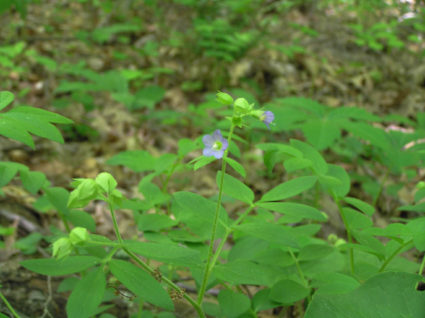

Botanical Information
Family: Caprifoliaceae (formerly in the Valerianaceae)
Main species used: Valeriana officinalis
All of the below medicinal information is for Valeriana officinalis unless specified.
Part used-Root
Valeriana officinalis is native to parts of Europe and Asia. It is the most commonly used species in commerce.
There are numerous Valeriana species native to the US. One of the main botanical differences are the divisions of the leaves. Valeriana officinalis has more leaflets than the native species (see photos).
There is one native eastern species: Marsh valerian (V. uliginosa). There are numerous species from the Rocky Mountains westward. There are four species I commonly see; Valeriana acutiloba, V. capitata, V. occidentalis and the oddest of the bunch is Valeriana edulis, called Tobacco root. This species is used very differently than the others. It is the only species I know that is eaten as a food. Here is a quote from Meriwether Lewis’s (of Lewis and Clark) “the rind was white and thin. the body or consistence of the root was white mealy and easily reduced by pounding to a substance resembleing flour which thickens with boiling water something like flour and is agreeable flavored” [sic]. The root of this species reminds me of the Mandrake root in the movie ‘Pan’s Labyrinth’ (see photo below). So far it has not come to life.
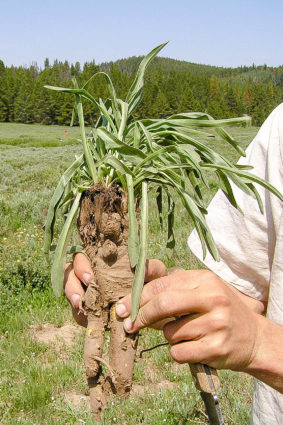
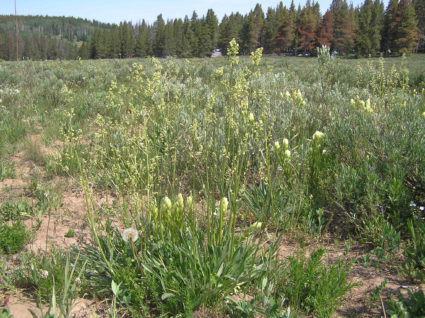


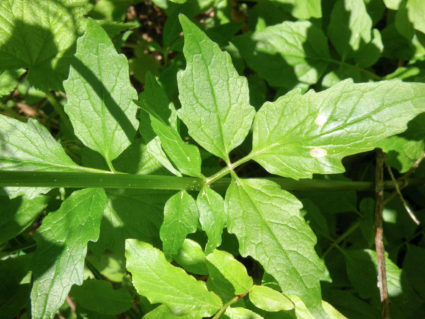
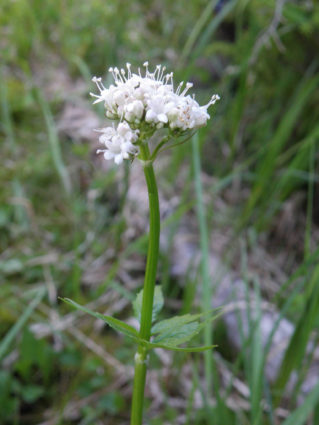


Wildcrafting/Ecology
With gathering Valerian, the most important distinction is whether one is gathering the introduced species (Valeriana officinalis) or one of the native species. If choosing to use one of the native species, please make sure there are plenty of plants in any particular region before gathering. Survey the area and make sure it is prolific enough to gather.
The main medicinal Valerian (Valeriana officinalis) is not native to North America. Where I live in Upstate NY, I commonly see it growing in roadside culverts (not a place to gather from). I also find it occasionally in wet meadows and fields where it grows in full sun. While it is always important to be conscientious how we gather plants, it is non-native plant with a stable population so one can gather it freely (as long as other folks are not gathering from the same source). Since the root is the part being gathered, cover up any holes and divots you leave in the ground for the health of local plant community. As mentioned, I would avoid gathering it where the roots might accumulate toxins such as along roads or other places where they might pull up pollutants.
The roots can be quite small in the wild so be prepared to gather a lot to make more than a small amount of medicine.
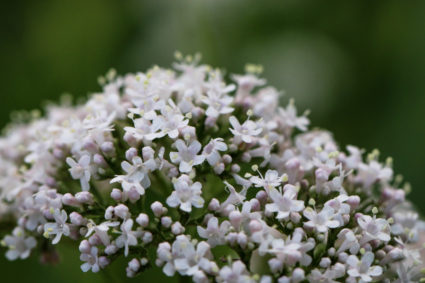
Cultivation
Valerian is a lovely plant to grow just for its beauty. The flower buds are pink and open to white. And when in flower Valerian is frequently visited by numerous insects, especially butterfly’s. This is a great garden plant for attracting numerous pollinators and other insects (see photos).
This plant is easily cultivated. I asked my friends Andrea and Matthias of Healing Spirits Herb Farm how they cultivate it.
“We find it is very easy to grow, we are zone 4 to 5 and never have any trouble. We grow ours in full sun. It really likes moist rich soil. We have been growing it on raised beds the last few years, and that is working very well, and makes harvesting easier. We start the seeds in the greenhouse, about 10 weeks before they are ready to be planted out in rows. It takes 10-21 days to germinate. Another way is in the spring we transplant seedlings from native populations on the farm out into our raised beds. We harvest in the fall of the first year, or the spring of the second year. It is extremely cold hardy.”
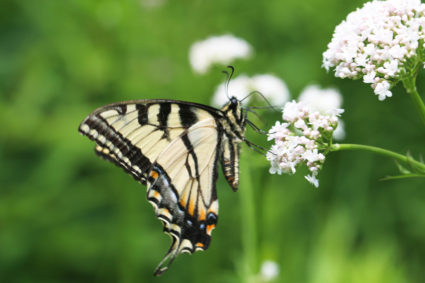
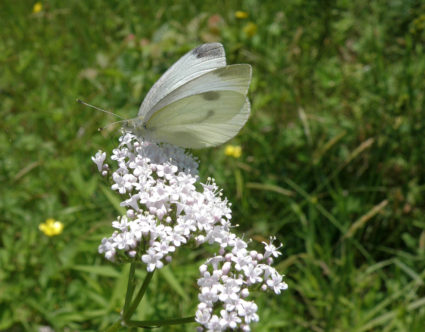
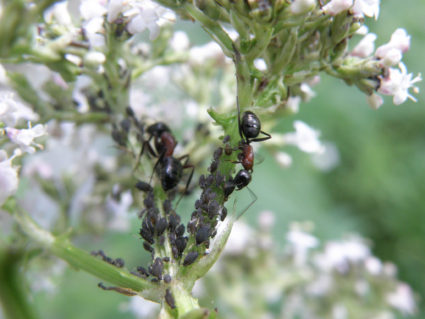
Preparations
Valerian is best as a fresh preparation. For this reason, I like it in liquid form where the aromatics are best preserved.
This plant is miscible in most liquids so while I mainly use tincture and glycerin it could also be made into a vinegar, honey or other menstruum.
Valerian is easily chopped up though I prefer to prepare tinctures and glycerites in a blender. I do not dry and store this plant.
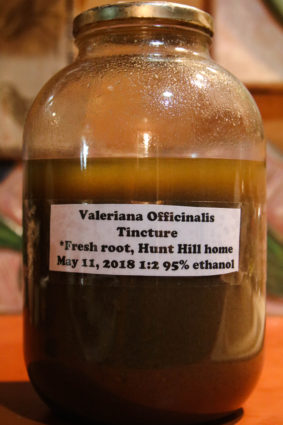
Notes on Preparing Medicine
Ratio-this is a plant weight to menstruum volume ratio. Example: if making 10 oz of Valerian tincture and the ratio is 1:2 , there would be 10 ounces (weight) of root and 20 ounces of alcohol (volume).
Percentage-the percentage of the alcohol. If using a proof, divide in half. For instance, 160 proof vodka is 80% alcohol (and 20% water).
- Tincture
- Fresh root
- 1:2 95% ethanol
- Glycerite
- Fresh root
- 1:2 vegetable glycerin
- Oil
- Fresh wilted root
- The root should be wilted at least 50% so the water content does not increase the likelihood of the oil going bad.
- Cover in extra virgin olive oil. Have at least 3 inches of oil over the top of the roots
- Liniment
- Fresh root
- 1:2 99% isopropyl alcohol
- Tea
- Dry root
- As much as needed (and tolerated)
- Capsules
- Dry root
- 1-4 capsules as needed.
- These may take a while before they have an effect
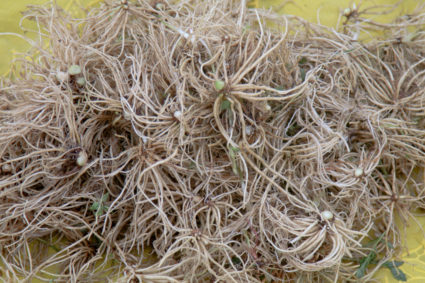
Medicinal Categories for Valerian
- Antispasmodic-reduce smooth muscle cramps and spasms
- Anxiolytic-reduce anxiety
- Nervine-tonics that help regulate nervous system functions. These ‘nourish’ the nervous system for long-term health.
- Pain reliever-general category for plants that relieve various forms of pain, often by damping down pain signals.
- Sedative-decrease excitability. They can be calming and reduce anxiety, though they can also reduce mental and physical function. Start with a small dose and raise the level to find the right personal amount.
- Skeletal muscle relaxant-relax skeletal muscles and reduce pain
- Sleep aid-a general term for any substance that helps with sleep. These range from anxiolytics to sedatives
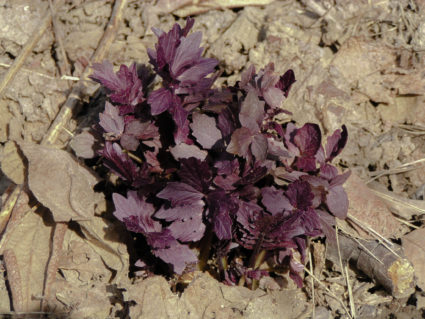
Main Medicinal Uses
Please read the ‘Safety’ section
Valerian has a number of medicinal uses, all relating to its effects on the nervous system (see ‘Research’). It is one of the best sleep aids, as well as a pain-relieving herb. It is also useful as an anxiolytic and nervine.
For sleep, Valerian is one of the strongest (non-narcotic) herbs. It does not work for everyone, and its effects can diminish over time as tolerance builds. But I have seen it help more folks than most other insomnia remedies. There are two ways to take it. One is right before sleep and the other is after waking up to help get back to sleep. There is a wide variability on how much to take at any one time. This depends largely on one’s responsiveness to the Valerian as well as the intractability of their insomnia. For sleep, it combines especially well with Hops.
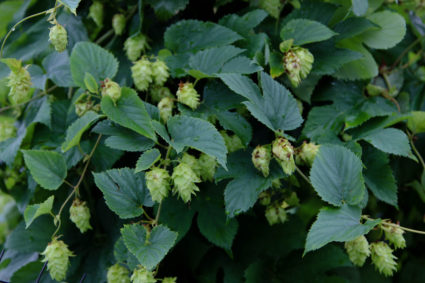
As a pain medicine, it is similar in that the dose necessary to reduce the pain is very individual. One of the cautions here is that if taking a large amount, it may reduce physical or mental capability. Two ways to work around this is: 1) Try it initially when you do not have any responsibilities, and 2) start with a small amount and gradually increase the dose. If using Valerian with other herbs for pain, consider what type of pain you are treating (i.e., muscular or visceral) to figure out what other plants to use along with it
As an anxiolytic or nervine, Valerian can be taken in smaller amounts, otherwise it may produce a sedative effect. It combines well with many nervines often being 1/5 part or less of a formula and taken a few times a day. This can be altered depending on one’s needs.
External Use-I have less experience here, but I have used Valerian in an oil base as a topical medicine for soft tissue injuries such as sprains. It is used with antiinflammatory herbs such as Arnica and St Johnswort. The Valerian is to reduce the pain, not the inflammation. The oil can be made into salves. Both of these can be applied throughout the day.
I have recently started making a Valerian liniment as a topical analgesic, but have not tried it enough to attest to its efficaciousness.

Safety
Valerian has one common and clear clinically relevant safety issue; some people will have a negative paradoxical effect from taking it. Instead of reducing anxiety, it can create excitability and agitation. In my years of asking groups of people who have had this effect, I would say about is about 1 in 9, which makes it a pretty common response.
To avoid this reaction with someone who has not tried it previously, they should initially try a small amount (perhaps 10 drops) in the afternoon or some time where agitation will not be as disturbing (as opposed to trying it right before sleep).
I have not found any link among the people who respond negatively to Valerian. I have heard a number of hypotheses, but have not seen them clinically.
Also, plants with strong actions can sometimes have negative idiosyncratic reactions. While this is uncommon with Valerian, it is helpful to let people know that these reactions are possible. This allows someone to rule out a negative medicinal effect from being a new health-related symptom.
While this is not really a safety component, there are people who cannot bear the smell or taste of Valerian.
Plant Combinations-plants that combine well with Valerian
- Arnica (Arnica species)-external antiinflammatory
- Black cohosh (Actaea racemosa)-skeletal muscle relaxant
- Cayenne (Capsicum species)-adjuvant
- Crampbark (Viburnum opulus)-antispasmodic
- Damiana (Turnera diffusa)-anxiolytic, nervine
- Hops (Humulus lupulus)-anxiolytic, pain reliever, sleep aid
- Jamaican dogwood (Piscidia piscupula)-pain reliever
- Kava kava (Piper methysticum)-anxiolytic, pain reliever, sedative, skeletal muscle relaxant, sleep aid
- Lobelia (Lobelia inflata)-antispasmodic, nervine
- Lousewort (Pedicularis species)-skeletal muscle relaxant
- Motherwort (Leonurus cardiaca)-anxiolytic, nervine
- Passionflower (Passiflora incarnata)-anxiolytic, nervine
- Prickly ash (Zanthoxylum clava-herculis)-adjuvant
- Rose (Rosa species)- anxiolytic, nervine
- Silk tassel (Garrya species)-antispasmodic
- Skullcap (Scutellaria lateriflora)-antispasmodic, anxiolytic, nervine, skeletal muscle relaxant
- Johnswort (Hypericum perforatum)-antiinflammatory
- Tulsi (Ocimum tenuiflorum)-anxiolytic, nervine

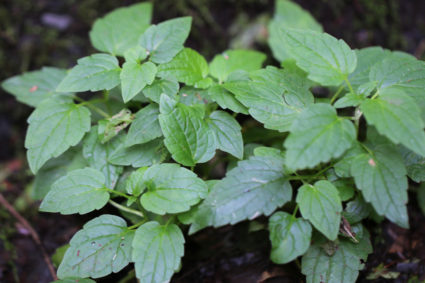
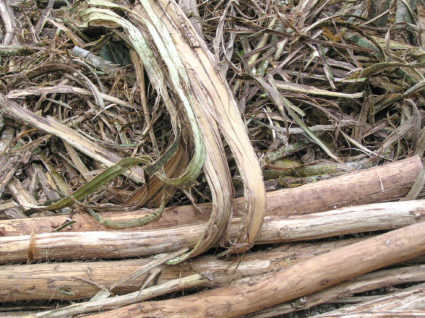
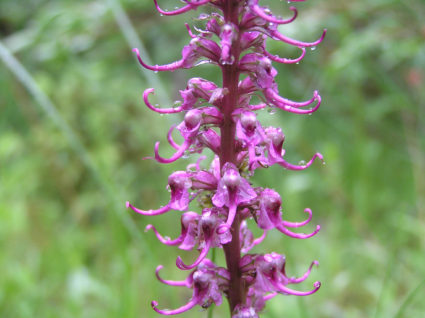
Medicinal Category Combinations– categories that combine well with Valerian.
- Adjuvant-increase the availability of a plant or formula
- 1Antiinflammatories-reduce inflammation
- 2Antimicrobials-kill parasitic microbes such as bacteria and viruses
- Antispasmodics-reduce smooth muscle cramps and spasms
- Anxiolytics-reduce anxiety
- Nervines-tonics that help regulate nervous system functions
- Pain relievers-a general category for plants that relieve various forms of pain
- Sedatives-reduce excitability
- Skeletal muscle relaxants-relax skeletal muscles
- Sleep aids– a general term for any substance that helps with sleep. These range from anxiolytics to sedatives
1 Inflammation is a major source of pain
2 Antimicrobial plants kill the source of infection, thereby reducing pain

Dosage
The dosage is very variable for any internal Valerian preparation (see ‘Safety’). I will be using the metric system for all liquid measurements.
Conversion-1 oz equals 30 ml
Dropper Size Considerations
- Dropper dosages are tricky as a number of factors can alter the amount that fills the pipette (the glass part of the dropper) such as the viscosity of the fluid or the resiliency of the rubber dropper tops.
- Often it takes 2 half droppers to get a ‘dropperful’
Dropperful
- A 1 ounce filled pipette contains 2 ml (A dropperful, as a full dropper, is 2 ml fluid).
Tincture and Glycerite Formulas and External Applications
All the instructions below (dosage, parts, plants) are just guidelines.
The dosage (how much and how often) is based on a number of factors including individuality and how much Valerian is in the formula.
The parts (pt) of a formula are the proportion of each plant in the formula. For instance, in a 1 oz (30 milliliter) bottle with: Valerian 4 pt, Hops 3 pt and Jamaican dogwood 1 pt, there would be Valerian 15 ml, Hops 11 ml and Jamaican dogwood 4 ml for a total of 30 ml.
In order to avoid confusion of what is a ‘dropperful’ I am using milliliter measurements and assuming they are being dispensed from a 1 oz dropper bottle.
Cannot Fall Asleep
- Hops 1 pt
- Valerian 1 pt
- 1-5 ml right before sleep.
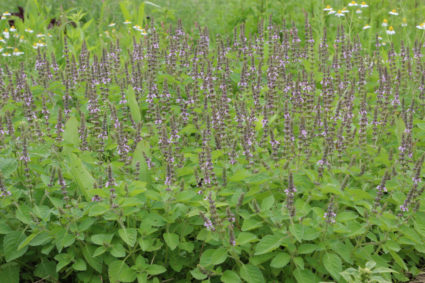
Waking Up Throughout The Night
- Tulsi 3 pt
- Damiana 3 pt
- Rose 2 pt
- Passionflower 2 pt
- Valerian 1 pt
- Take 1-2 ml 2-5 times throughout the day to help sleep throughout the night
Waking Up Abruptly and Cannot Fall Back Asleep
- Valerian 2 pt
- Hops 1 pt
- 1-5 ml
- With this formula, the most important aspect is how you take the medicine.
- Have it prepared and poured beforehand in a cup of water and place it within reach of where you sleep.
- As soon as you wakes up, reach over and drink it all down.
- Try not to add any stimuli such as lights (and intrusive thoughts) while the medicine helps you relax.
- You may need quite a bit to have this affect.
Acute Pain (Generalized)
- Valerian 2 pt
- Hops 1 pt
- Skullcap 1 pt
- Jamaican dogwood 1 pt
- 2-5 ml as often as needed.
- May have a sedative affect.

Chronic Pain (Generalized)
- Jamaican dogwood 2 pt
- Skullcap 1 pt
- Valerian 1 pt
- Prickly ash 1 pt
- 1-3 ml 2-5 times daily
Skeletal Muscle Pain
- Black cohosh 3 pt
- Lousewort 3 pt
- Jamaican dogwood 3 pt
- Valerian 1 pt
- 1-4 ml as often as needed

Spasms and Cramps
- Crampbark 4 pt
- Jamaican dogwood 2 pt
- Silk tassel 2 pt
- Valerian 1 pt
- Lobelia ½ pt
- 1-4 ml as often as needed
Anxiolytic Tonic
- Tulsi 5 pt
- Motherwort 5 pt
- Passionflower 5 pt
- Valerian 1 pt
- Lobelia ½ pt
- 1-3 ml 2-5 times daily
Oil/Salve/Liniment-for external use
- Arnica 2 pt
- Johnswort 2 pt
- Valerian 1 pt
- 1Cayenne-2-5 drops per ounce of liquid
- Black birch essential oil-add 2 drops of essential oil per oz of liquid
- For salves-add beeswax
- For liniment-prepare in isopropyl alcohol
- Apply topically to painful areas such as soft tissue injuries
1Caution-the heat/pain of Cayenne can be very variable. Before adding any into your oil or liniment, dab yourself with a small amount to check how strong it is.
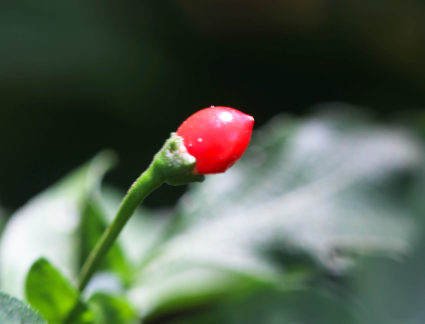
Research and Constituents
There are many scientific papers on Valerian as it has been used globally. It has a number of novel compounds that likely give its medicinal properties. There are a few constituents that research has focused on for their potential medicinal attributes. These include the iridoids classified as valepotriates as well as valerenic acid, a sesquiterpene found in the essential oil. Valerian root may contain GABA (gamma-aminobutyric acid) though there is a question whether it can cross the blood-brain barrier.
Much of the research suggests that the medicinal properties of Valerian are the synergistic affects of its various constituents.
The mechanism of action seems similar to GABA agonist drugs such as the benzodiazepines (i.e., Xanax). GABA is the major inhibitory neurotransmitter. (Side note, while there is no clear connection, I have always thought it was etymologically interesting that Valium [another benzodiazepine] sounds like Valerian).
Valerian binds to a slightly different GABA receptor than the benzodiazepines but the overall effect is similar, acting as a disinhibitor and increasing overall sleep time.
Valerian has also been shown to decrease the breakdown and/or removal of GABA. This gives GABA a longer period to bind to its receptor and elicit its anxiolytic effects.
Glossary
- Disinhibitor-the loss of inhibition caused by an outside stimulus (i.e., alcohol)
- GABA-gamma-aminobutyric acid-the major inhibitory neurotransmitter that decreases excitatory reactions, creating disinhibition and reduced anxiety.
- Glycerite-plants extracted in glycerin. While sweet, glycerin has a low glycemic index.
- Liniment-plants extracted in isopropyl (rubbing) alcohol. These are for external use only. The isopropyl allows for quick absorption of the medicinal constituents.
- Menstruum-the solvent used to extract the medicinal constituents from plants
- Miscible-solubility, the ability to mix fully with another solution.
- Tincture-plants extracted in ethyl (drinking) alcohol. Anyone maintaining sobriety should be aware they contain alcohol.
- Tonic-a type of medication taken regularly to improve the state of a tissue or organ and to increase overall health.
.
